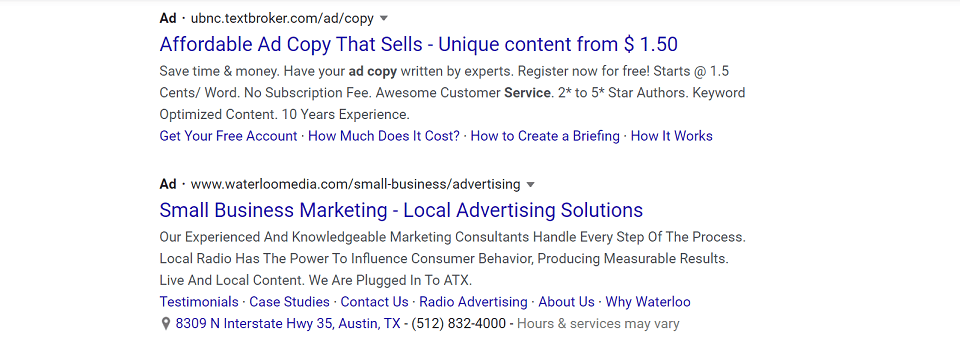Google isn’t a search engine anymore. It’s an answer engine. The traditional SEO strategies you’ve employed for years are no longer sufficient.
With AI Mode rolling out across results pages, that shift just became permanent.
If you’re still optimizing your site for keyword rankings alone, you’re going to lose visibility.
And it will happen faster than you may expect.
Google’s new AI Mode rewards content that answers questions, provides clarity, and enables its systems to extract and summarize information with ease.
This post breaks down exactly how to structure your content so it works with Google AI Mode, rather than being ignored by it.
The Shift: From Keywords to Intent + Structure
AI Mode doesn’t just match search terms to pages.
It tries to understand the intent behind the query and deliver a synthetic response, one that pulls information from trusted sources across the web.
That means your website needs to:
- Clearly answer specific questions
- Use formatting that helps AI identify what matters
- Demonstrate expertise and topical focus
- Avoid filler and fluff
Think less like a traditional blog. Think more like a structured resource center.
What Kind of Content Does Google AI Mode Pull From?
Let’s start with what Google wants to see in this new era.
According to the Search Central blog, Google encourages creators to continue producing helpful, people-first content.
But that’s only half the story…
In AI Mode, helpful content must also be:
- Machine-readable (clean HTML, semantic structure)
- Scannable and modular (clearly separated sections)
- Contextually complete (answers the full query, not just part)
If you want your domain to appear in answers, summaries, or follow-up prompts, it is no longer just about what you write.
Now, you need to optimize how you present information.
Start Here: Restructure Your Pages Like This
Here’s a sample structure that works well for AI Mode:
✅ H1: Core Topic or Question
Make the page’s purpose obvious.
Use natural language. This is not the place to stuff keywords.
✅ Short Intro (2–3 sentences max)
Explain what the reader (and Google) can expect.
Preview the answer, especially if it’s a high-intent query.
✅ Subheadings (H2, H3)
Use H2s to break content into digestible sections.
Each section should align with a sub-question or sub-topic.
This is the best way to deploy well-built keyword or topic clusters.
Use an overarching keyword as the focus, and the secondary questions in your H2 and H3 subheaders.
✅ Clear, Direct Answers
Immediately beneath each heading, give the answer. One or two sentences.
Then expand if necessary.
✅ Bulleted or Numbered Lists
These work extremely well for:
- Instructions
- Comparisons
- Feature breakdowns
- Summaries
✅ Tables for Clarity
When comparing options, showcasing pros/cons, or listing features, tables help Google interpret and extract.
✅ Wrap with FAQs or “People Also Ask” Content
Include 3–5 relevant Q&A blocks at the bottom of your page. Use <h3> for the question and a wrap answers with <p> and </p>.
Add Structured Data Markup (Schema) Wherever You Can
Schema markup gives AI machines extra clarity on what each piece of content means.
For AI Mode, prioritize:
- FAQPage for question-answer blocks
- HowTo for step-by-step instructions
- Article for long-form educational content
- Product for eCommerce and feature descriptions
- Review for user feedback and credibility signals
Schema doesn’t guarantee inclusion in AI results—but it increases your chances significantly.
Avoid These Common Structural Mistakes
These issues will block AI Mode from recognizing your value:
🚫 Walls of text with no headers
🚫 Keyword-stuffed paragraphs that bury the actual answer
🚫 Thin content pages with no depth
🚫 Auto-generated pages with duplicate content on them
🚫 Visual-only information (e.g. charts without text descriptions, galleries without captions)
If Google’s AI can’t find or parse your answers, it won’t use them.
How This Applies to Mid-Sized Businesses
You don’t need a massive content team or enterprise CMS to implement this.
If you’re a mid-sized company with a blog, service pages, or support content, you can win in AI Mode by:
- Rewriting top pages to follow the structure above
- Turning long, messy posts into clear question-answer formats
- Updating existing content to include FAQs
- Using internal knowledge (sales scripts, support tickets) to surface real user queries
- Applying schema with lightweight tools or plugins
Answer Engine Optimization (AEO) isn’t about doing more. It’s about doing what already works, but better structured and more intentionally organized.
Think Like a Data Source, Not Just a Publisher
You’re no longer just writing for humans.
You’re feeding a machine that builds answers for humans.
That means:
- Front-load your insights (start by telling them what you’re gonna tell them)
- Be concise before you expand
- Mark up your answers clearly
- Make every section self-contained and scannable
When your content works as a source, Google AI Mode will reward it with exposure, citations, and follow-up visibility.
Final Tip: Look at Your Website Like a Knowledge Graph
Every page, every section, every heading—think of it as a node in a bigger structure.
If you help Google understand how your content connects, supports, and clarifies the topic, it will reward you with placement in AI-generated answers.
You’re no longer trying to be the best result.
You’re trying to be the best answer.
Need help figuring out this whole AEO strategy for your own website?
Contact me today and we can dig in. Let’s audit your N-E-E-A-T-T readiness, Content Strategy, and Content Structure to position you better for answer engines including Google AI Mode.
Tommy Landry
Latest posts by Tommy Landry (see all)
- B2B SEO in 2025: Winning Visibility in AI-Curated Buyer Journeys - December 16, 2025
- Local SEO Meets AEO and GEO: How AI Platforms Read Local Authority Signals - December 9, 2025
- What Is an SEO Proposal and What Should It Include? - December 2, 2025





